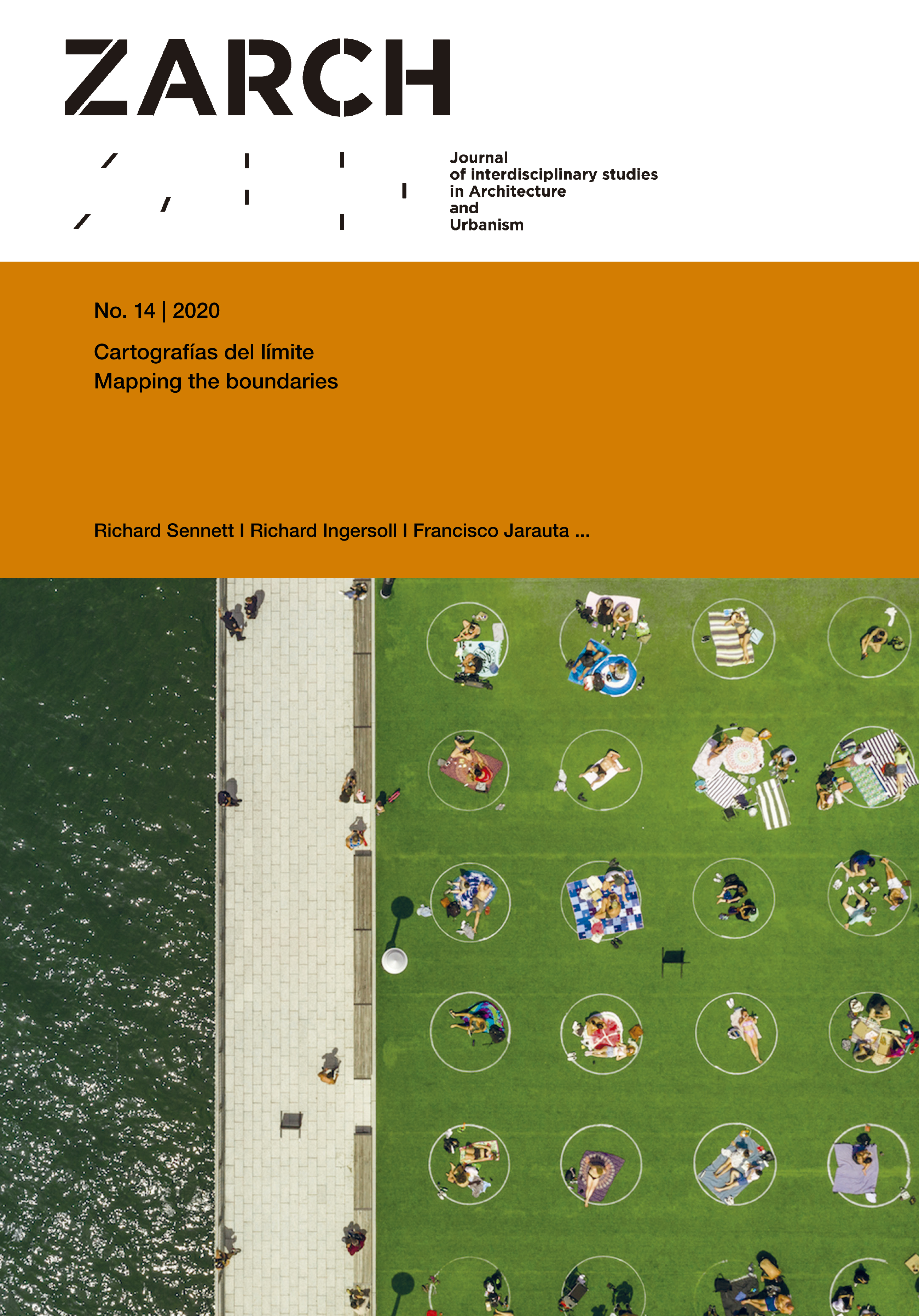Cybernetic maps of the landscape: CAVS collaborative projects for the recovery of the natural environment of the Charles River
DOI:
https://doi.org/10.26754/ojs_zarch/zarch.2020144298Keywords:
Landscape, Technology, Cybernetics, Environment, NatureAbstract
This article presents the projects that resulted from an institutional initiative, promoted by the Center for Advanced Visual Studies (CAVS) of the Massachusetts Institute of Technology (MIT) in the early seventies, in which a series of projects were proposed over the area of the Charles River that explored the possibility of 'inhabiting' the river, understood as a physical boundary between the cities of Cambridge and Boston. The initiative raised the study of this area, then fragile and vulnerable, threatened by the uncontrolled growth of both cities and deeply deteriorated. In order to do that, the design of new urban spaces was proposed, based on the theory of systems and cybernetics, which used new technologies to transform the environment, proposing the recovery of the natural environment of the river to integrate it in continuity with the urban plot. All of them have had a strong impact on interactive architectures and intelligent environments that began to materialize in real proposals already in the eighties, less influenced by cybernetics than digital and which today are helping to visualize and raise awareness citizenship to prevent from negative parameters that could affect the urban environment in the context of current smart cities.
Downloads
References
AA.VV. 1972. MIT Multiple Interaction Team. Cambridge, Massachusetts: Center for Advanced Visual Studies.
Arning, Bill. 2008. György Kepes’ Vision & Value, 1965-1972. Cambridge, Massachusetts.
Beck, John; Bishop, Ryan. 2020. Technocrats of the Imagination: Art, Technology, and the Military-Industrial Avant-Garde. Durham: Duke University, Press Books.
Blackinger, John R. 2019. György Kepes: undreaming the Bauhaus. Cambridge, Massachusetts: MIT Press.
Collins Goodyear, Anne. 2004. György Kepes, Billy Klüver, and American Art of the 1960s: Defining Attitudes Toward Science and Technology. Science in Context vol. 17-4. Reino Unido: Cambridge University Press. https://doi.org/10.1017/S0269889704000286
Earls, Paul. 1975. Sounding Space: Drawing Room Music, Sound Sculpture: the Techniques, Applications and Future Directions of Sound Sculpture. Vancouver: Pulp Press.
Goldring, Elizabeth. 1987. Desert Sun/Desert Moon and the Sky Art Manifesto, Art of the Future: the Future of Art, MIT Press. Cambridge, Massachusetts.
Kepes, György. 1956. The New Landscape in Art & Science. Chicago: Paul Theobald.
_____. 1965. The Visual Arts and the Sciences: A Proposal for Collaboration, Daedalus, 94:1. Cambridge, Massachusetts, MIT Press.
_____. 1965. Vision and Value Series. Nueva York: George Braziller.
_____. 1972. The Artist’s role in Environmental Self-Regulation. Arts of the Environment. Nueva York: George Braziller.
_____. 1974. Art talk on Imaginary Side, Evening Independent.
_____. 1977. The MIT Years: 1945-1977. Cambridge, Massachusetts: Massachusetts Institute of Technology, MIT Press.
Lorenzo, Covadonga. 2017. La noción de ciudad como ambiente significante. Las primeras propuestas teóricas urbanas de Juan Navarro Baldeweg. ZARCH Journal of Interdisciplinary Studies in Architecture 8: 184-199. https://doi.org/10.26754/ojs_zarch/zarch.201782155.
_____. 2017. La influencia de Györg Kepes en la obra temprana de Juan Navarro Baldeweg realizada en el Center for Advanced Visual Studies del MIT (1971-1975), RA. Revista de Arquitectura 19: 67-78. https://doi.org/10.15581/014.19.
_____. 2019. Hacia la idea de ciudades inteligentes. Las propuestas alternativas de ciudad de Juan Navarro Baldeweg para el Centro de Cálculo de Madrid, Revista Indexada de Textos Académicos (RITA), vol. 12. Madrid: Red Fundamentos.
Maderuelo, Javier. 1990. El Espacio Raptado: Interferencias entre Arquitectura y Escultura. Madrid: Mondadori.
Navarro Baldeweg, Juan. 1973. La ciudad como ambiente significante, Nueva Forma 94.
_____. 1975. El medioambiente como espacio de significación. Madrid: Fundación Juan March.
_____. 2007. La región flotante, Juan Navarro Baldeweg. Una Caja de Resonancia. Barcelona: Editorial Pre-textos, Colegio de Arquitectos de Cataluña.
Piene, Otto. 1969. Piene: Elements. Nueva York: Howard Wise Gallery.
_____. 1973. More Sky. Cambridge, Massachusetts: MIT Press.
Reichardt, Jasia, 1968, Cybernetic Serendipity. The Computer and the Arts. Londres: Studio International.
_____. 1972. Art at large, New Scientist 798.
Rivers, Tina. 2013. The Proliferation of the Sun: Group ZERO and the Medium of Light in 1960s America, The Medium of Light in the Context of the Neoavantgarde of the 1950s and 1960s. Düsseldorf: Düsseldorf University Press.
St. Florian, Friedrich. 1972. Proposte per un nuovo Harvard Bridge, Casabella 383.
Vallye, Anna. 2011. Design and the Politics of Knowledge in America, 1937-1967: Walter Gropius, Gyorgy Kepes. Nueva York: Columbia University Library. https://doi.org/10.7916/D883401H
Viteri, Christian. 2012. Mauricio Bueno: Horizontes Variables. Ecuador: Centro de Arte Contemporáneo, Fundación Museos de la Ciudad.
Wiener, Norbert. 1948. Cybernetics, Cambridge, Massachusetts: MIT Institute Archives, Massachusetts Institute of Technology.


